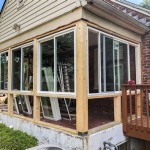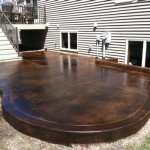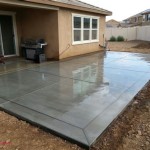How To Fix Patio Pavers Pulled Up by a Pool Cover
Maintaining a pristine pool area involves more than just keeping the water clean. The surrounding patio, often constructed with pavers, contributes significantly to the overall aesthetic and functionality. A common issue for pool owners is the displacement or lifting of patio pavers, particularly those located near the pool's edge, caused by the tension and movement of a pool cover. Addressing this problem promptly is crucial to prevent further damage and ensure the safety and appearance of the patio.
The forces exerted by a pool cover, especially during installation, removal, and periods of heavy snow or rain, can be substantial. These forces are transferred to the pavers through the anchoring system and the cover's movement. Over time, this constant stress can loosen the pavers, compromise the bedding material, and ultimately lead to them being pulled up or becoming uneven. Repairing these affected pavers requires a systematic approach that addresses the underlying cause of the issue, rather than just replacing the dislodged stones.
Identifying the Root Cause of Paver Displacement
Before commencing any repair work, a thorough assessment of the situation is essential to accurately identify the cause of the paver displacement. Several factors can contribute to this issue, and understanding the specific reason for the problem will dictate the appropriate repair strategy.
Poor Installation: The initial installation of the pavers is often a significant factor. If the base layer beneath the pavers was not properly compacted or if the bedding sand was not evenly distributed, the pavers are more susceptible to movement. Insufficient edge restraint can also contribute to paver instability. A properly installed paver patio should have a solid, well-compacted base of gravel, a leveling layer of sand, and adequate edge restraints to prevent lateral movement.
Inadequate Bedding Material: The type of sand used as bedding material plays a vital role in paver stability. Using the wrong type of sand, such as coarse sand containing large particles, can lead to uneven settling and paver displacement. The ideal bedding material is a fine, graded sand that allows for proper interlock between the pavers. Furthermore, insufficient sand depth or uneven distribution can contribute to the problem. The bedding sand should be screeded evenly to a consistent depth, typically around one inch, to provide a stable base for the pavers.
Pool Cover Design and Anchoring System: The design and anchoring system of the pool cover can directly impact the pavers. Covers that exert excessive force on the anchoring points are more likely to cause displacement. The type of anchors used, their placement, and the tension applied to the cover straps can all contribute to the problem. Consider the age and condition of the pool cover itself. Old or damaged covers may stretch or sag, increasing the stress on the anchoring points and exacerbating the problem. Explore alternative anchoring methods or pool cover designs that distribute the load more evenly to minimize stress on the surrounding pavers.
Environmental Factors: Environmental factors, such as freeze-thaw cycles and excessive rainfall, can also contribute to paver displacement. Water that penetrates the paver joints can freeze and expand, exerting pressure on the surrounding pavers and causing them to shift. Similarly, excessive rainfall can saturate the base layer, weakening it and making the pavers more susceptible to movement. Proper drainage and the use of polymeric sand in the paver joints can help mitigate the effects of environmental factors.
Tree Root Intrusion: In some cases, tree roots growing beneath the paver patio can lift and displace the pavers. This is more common in areas with mature trees located close to the pool area. Inspect the surrounding area for signs of root intrusion, such as bulges or cracks in the patio surface. If tree roots are identified as the cause, consulting with an arborist to determine the best course of action is recommended. This may involve root pruning or installing a root barrier to prevent further damage.
Steps for Repairing Displaced Patio Pavers
Once the underlying cause of the paver displacement has been identified, the repair process can begin. This involves carefully removing the affected pavers, preparing the base, and reinstalling the pavers with proper bedding and joint stabilization.
Paver Removal: Begin by carefully removing the displaced pavers. Use a flathead screwdriver or a paver removal tool to gently pry up the pavers, working around the edges to loosen them. Avoid applying excessive force, as this can damage the pavers. Once the pavers are loosened, lift them out and set them aside. Inspect the pavers for any cracks or damage. If severely damaged, consider replacing them with new pavers that match the existing ones. If replacement pavers are needed, attempt to source them from the same manufacturer and color batch to ensure a consistent appearance.
Base Preparation: After removing the pavers, inspect the base layer beneath. If the base is uneven or compacted, it will need to be re-leveled and compacted. Remove any loose debris, old bedding sand, and vegetation. If the gravel base is inadequate, add more gravel and compact it using a plate compactor. The compacted base should be level and stable, providing a solid foundation for the pavers. Ensure that the base slopes slightly away from the pool to promote proper drainage. This will help prevent water from pooling beneath the pavers and contributing to future problems.
Bedding Sand Installation: Once the base is prepared, install a layer of bedding sand. Use a fine, graded sand specifically designed for paver installation. Spread the sand evenly over the base, using a screed board to create a level surface. The bedding sand should be approximately one inch thick. Avoid over-compacting the sand, as this can reduce its ability to interlock with the pavers. Ensure that the sand is consistently level across the entire area. Any unevenness in the bedding sand will translate to unevenness in the paver surface. Use a level to check the sand's consistency before proceeding.
Paver Reinstallation: Carefully reinstall the pavers, ensuring that they are level and aligned with the surrounding pavers. Use a rubber mallet to gently tap the pavers into place. Maintain consistent spacing between the pavers, typically around ⅛ to ¼ inch. Use paver spacers to ensure uniform joint widths. As you reinstall the pavers, periodically check the level of the surface to ensure that it is even and consistent. Use a level to make any necessary adjustments.
Joint Stabilization: After reinstalling the pavers, fill the joints with polymeric sand. Polymeric sand is a specialized sand that contains polymers that bind the sand particles together, creating a more stable and durable joint. Sweep the polymeric sand into the joints, ensuring that they are completely filled. Use a broom to remove any excess sand from the paver surface. Lightly mist the area with water to activate the polymers in the sand. Follow the manufacturer's instructions for proper application and curing. Polymeric sand helps prevent weed growth, inhibits insect infestation, and stabilizes the pavers, reducing the likelihood of future displacement.
Preventative Measures to Minimize Future Paver Displacement
After completing the repairs, implementing preventative measures is crucial to minimizing the risk of future paver displacement caused by the pool cover. These measures focus on improving drainage, reducing stress on the pavers, and maintaining the integrity of the paver patio.
Improved Drainage: Ensuring proper drainage around the pool area is essential. This involves grading the patio to promote water runoff and installing drainage systems to collect and divert excess water. Consider installing a French drain along the edge of the patio to intercept surface water and prevent it from saturating the base layer. Regularly inspect and clean any existing drains to ensure that they are functioning properly. A dry patio base is less susceptible to settling and paver displacement.
Pool Cover Modifications: Evaluate the pool cover design and anchoring system. Consider upgrading to a cover that distributes the load more evenly or using alternative anchoring methods that minimize stress on the pavers. Consult with a pool cover specialist to explore options such as spring-loaded anchors or floating covers. Regularly inspect the cover for any signs of wear or damage, and repair or replace it as needed. A well-maintained cover will exert less stress on the anchoring points and the surrounding pavers.
Regular Maintenance: Perform regular maintenance on the paver patio to identify and address any potential problems early on. This includes sweeping the patio to remove debris, cleaning the pavers to prevent staining, and inspecting the joints for any signs of erosion or weed growth. Reapply polymeric sand as needed to maintain the integrity of the joints. Promptly repair any cracks or damage to the pavers to prevent further deterioration. Regular maintenance will help prolong the life of the paver patio and minimize the risk of paver displacement.
By carefully identifying the cause of the paver displacement, implementing effective repair strategies, and taking preventative measures, pool owners can effectively address this common issue and maintain the beauty and functionality of their pool area.

How To Install Pool Safety Cover Anchors

All You Need To Know About Installing A Pool Cover Roller

Ultimate Guide To Fixing Concrete Pool Deck Settlement

All You Need To Know About Installing A Pool Cover Roller

My Collapsing Paver Walkway All About The House

All You Need To Know About Installing A Pool Cover Roller

How To Repair Sinking Pool Deck Pavers You Won T Believe What Happens Next

Let S Build A Super Quick Easy Brick Pool Patio My Perpetual Project

How To Install A Pool Fence In Pavers All Safe Covers

How To Install A Paver Patio Base Family Handyman
Related Posts








